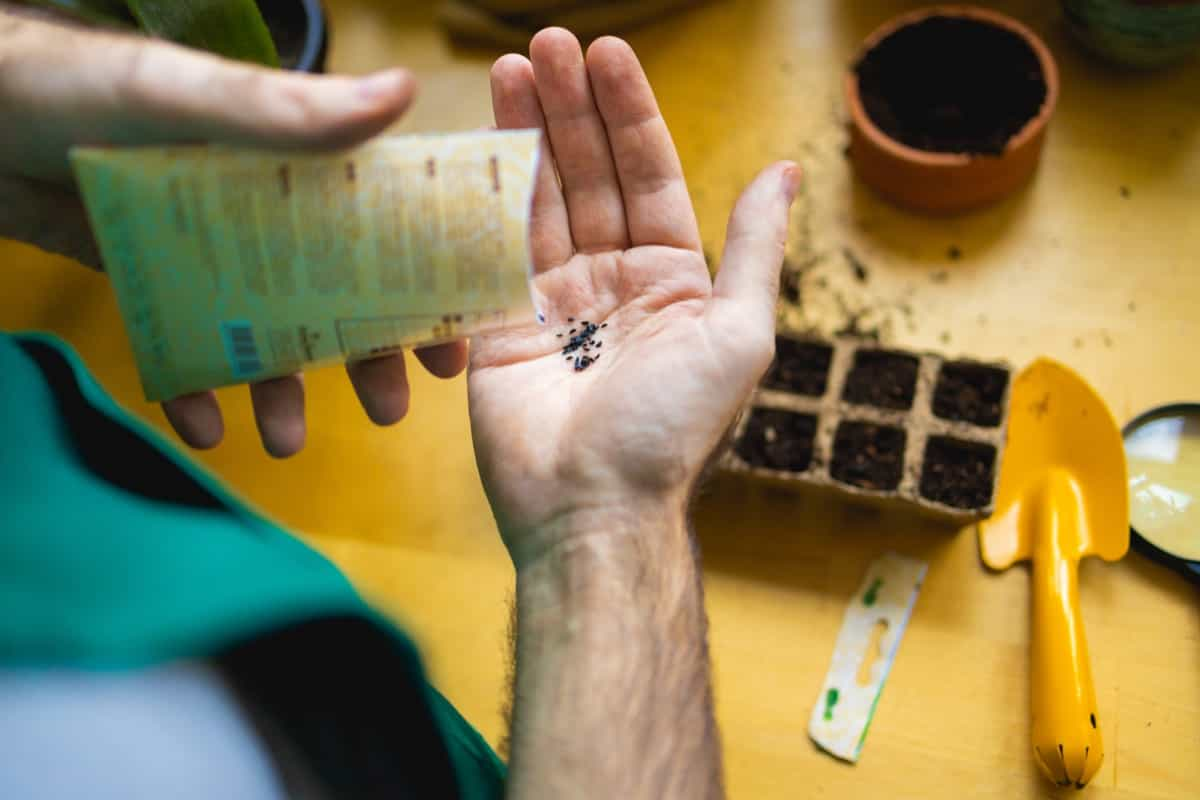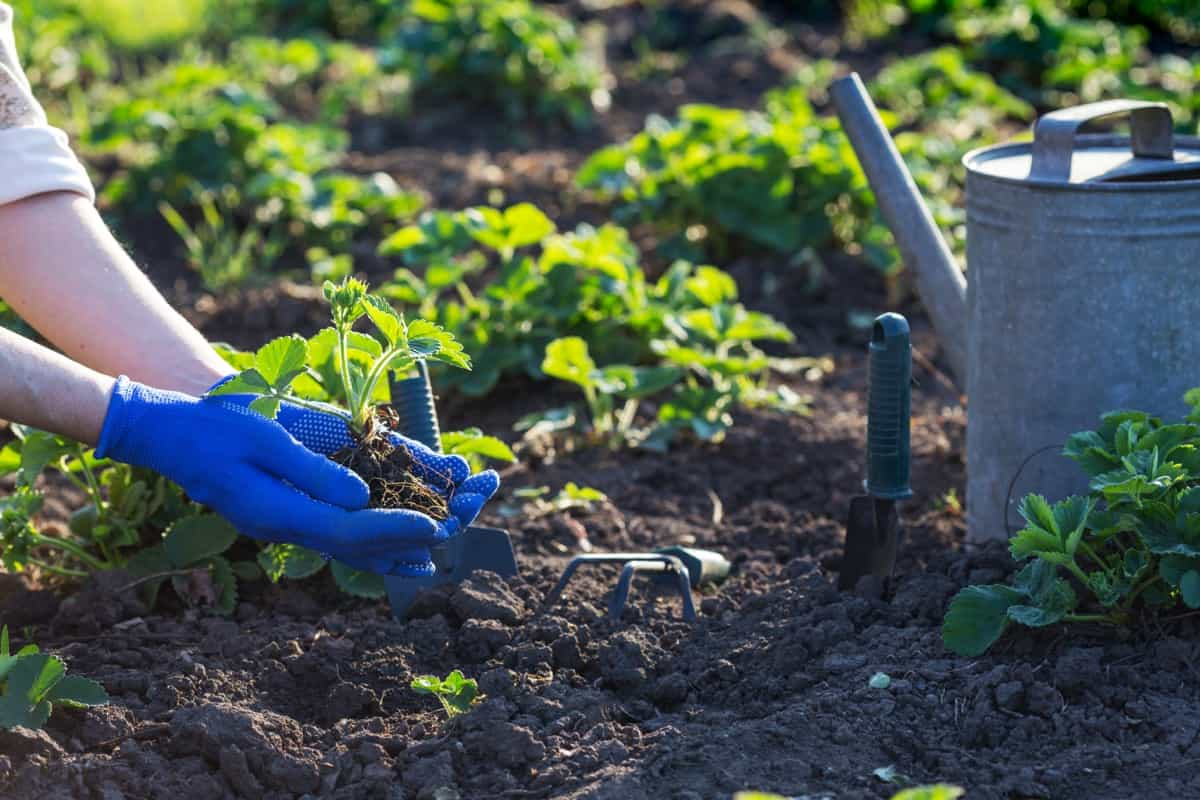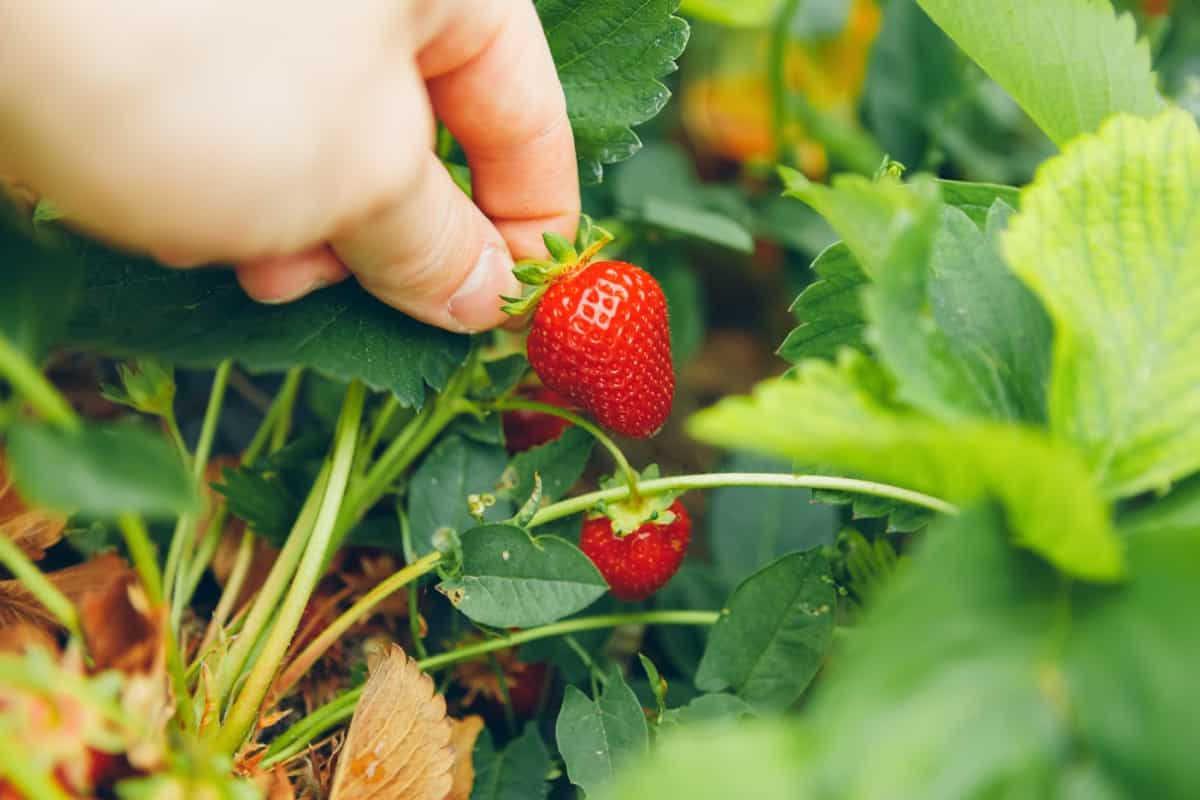Many people like strawberries because they are tasty and healthy. Amateur gardeners also favor them because they are simple to grow. This article will explain how to start a strawberry garden from scratch. Below we learn how to plant strawberries from seeds, how to grow strawberry seeds outdoors, and a step-by-step guide on how to plant strawberry seeds outdoors.

How to plant Strawberry seeds outdoors
Choose the right location: The first step in planting strawberries is to choose the correct location. Strawberries are best grown in a sunny location with well-drained soil. To mature and bear fruit, they need a minimum of six hours of sunlight every day. If your garden does not receive enough sunlight, you can grow your strawberries in a raised bed or in containers that can be moved to a sunny location.
Prepare the soil: The next step is to prepare the soil. Strawberries prefer a soil pH of 6.0 to 6.5, which is slightly acidic. To achieve this, you can add sulfur to the soil or plant your strawberries in a raised bed filled with a mixture of peat moss, compost, and vermiculite. Remove weeds or grass from the planting area to prevent competition for nutrients and water.
Plant the seeds: Strawberry seeds can be planted directly in the soil or containers. If you choose to plant your seeds directly in the soil, you should plant them about half an inch deep and 12 inches apart. If planting in containers, you should plant the seeds in a soil-less mix, such as peat moss and vermiculite. Make sure to water the seeds well after planting to help them establish.
Water and care for your strawberries: It is essential to water them regularly, especially during periods of drought. They should be watered deeply about once a week or more often if the soil is dry. Mulching the area surrounding your strawberry plants is an excellent way to maintain a moist soil temperature and cut down on weeds.
Fertilize your strawberries: Strawberries will benefit from regular fertilization. You can use a balanced fertilizer, such as 10-10-10, or a fertilizer specifically formulated for strawberries. If your strawberries aren’t flourishing, try fertilizing them once a month.
Prune your strawberries: Strawberries produce runners, shoots that grow from the base of the plant and produce new plants. You should prune these runners to keep your strawberries from becoming overcrowded and encourage fruit production. Pruning should be done in the fall after the fruit has been harvested.
Harvest your strawberries: Strawberries are usually ready to be harvested about three to four weeks after flowering. The fruit should be plump and red, and the cap should be easy to remove. You should harvest strawberries every few days to encourage fruit production and prevent overripe fruit from attracting pests and disease.
In case you missed it: How to Germinate Strawberry Seeds in a Paper Towel: A Beginners Guide

Frequently Asked Questions about growing Strawberries (FAQ)
How long it takes to grow Strawberries from seeds?
You’ve undoubtedly wondered how long strawberries grow. From planting a seed to harvesting a ripe, juicy fruit typically takes between 60 and 90 days. The time spent in the growth phase is influenced by the environment you provide. Mind the heat, light, water, and fertilizer.
What is the fastest way to germinate Strawberry seeds?
It’s recommended that you maintain them in a sunny area inside. The strawberry seeds should sprout in about three weeks. Don’t let the soil dry up, and make sure it has enough light. The top of a refrigerator or a bottom heat pad is also an excellent location to keep the seeds warm as they grow. Add artificial light to the strawberry plant seedlings’ environment if they aren’t in direct sunlight. You can use a grow light or fluorescent work light. Place the light source 3–4 inches away from the strawberry seedlings and gradually elevate it as the plants develop.
Do Strawberry seeds need direct sunlight?
Strawberries can’t produce fruit unless they’re exposed to sunlight. Therefore, they need daily exposure to sunlight of at least six hours, preferably ten or more. A soil test can tell you whether or not you need to amend your soil with additional nutrients before you plant. Before you plant anything, mixing in some compost that has had time to decompose is a good idea. Plants benefit from compost because it enhances the soil by adding nutrients, promoting better drainage, and boosting microbial activity.
Do Strawberries grow well in pots?
Growing strawberries is easy since the plants can be transplanted into a broad range of containers, from little 6- to 8-inch pots to huge planters like wooden or plastic half barrels. They can also be grown in containers like window boxes and hanging baskets. Also available are “strawberry jars,” similar to mason jars but taller and have many little pockets on the sides to accommodate the plants. However, the results could be better since it is difficult to water these containers enough.
What kind of soil do Strawberries need in pots?
Use a high-quality, peat-free all-purpose mix to get the best results from your strawberry plants. If you want your strawberries to thrive, you shouldn’t use garden soil since it will compress in a container and prevent water from draining quickly. Strawberry plants thrive in well-drained soil that is kept evenly wet.
Plants can be helped by adding blood, fish, bone meal, or a vegan substitute to the potting mix. Pick a fertilizer with a moderate N:P:K ratio (one that lists these figures as about equals on the package), or better yet, one with mildly more potassium (K) and less nitrogen (N) since too much N will promote soft, leafy growth over fruits and flowers.
In case you missed it: Planting Strawberry Seeds in Pots: Step-By-Step Process for Beginners

What is the best fertilizer for Strawberries?
Strawberry plants, in particular, need much nitrogen. Use a nitrogen-only fertilizer like urea (46-0-0) or ammonium nitrate (33-0-0). A balanced fertilizer, such as a 12-12-12, is another alternative. So that the fertilizer can reach the soil where the roots can take up the nutrients, a gentle trench can be dug, and the soil is softly broken up with a hoe. After the trench has been dug, the fertilizer should be placed inside, and the area should be backfilled. To get the best results from your fertilizer, use it at the recommended rate as specified on the package.
Conclusion
Outdoor strawberry gardening, in conclusion, is easy and fruitful. If you follow these instructions, you should have no trouble producing your excellent harvest of strawberries. Be patient and give your strawberries the attention they need, and you’ll be rewarded with a harvest you can eat for years.
- Feed Your Flock for Less: Top 10 Tips to Save on Chicken Feed
- Ultimate Guide to Ossabaw Island Hog: Breeding, Raising, Diet, and Care
- Hatching Answers: The Top 10 Reasons Your Chickens Aren’t Laying Eggs
- Eggs and Economics: Breaking Down the Cost of Raising Backyard Chickens
- Defend Your Greens: Proven Methods to Keep Iguanas Out of Your Garden
- Ultimate Guide to Cinnamon Queen Chicken: A Comprehensive Guide for Beginners
- Ultimate Guide to California Tan Chicken: Breeding, Raising, Diet, Egg-Production and Care
- Ultimate Guide to Marsh Daisy Chicken: Breeding, Raising, Diet, and Care
- 10 Types of Chicken Farming Businesses You Can Start for Profits